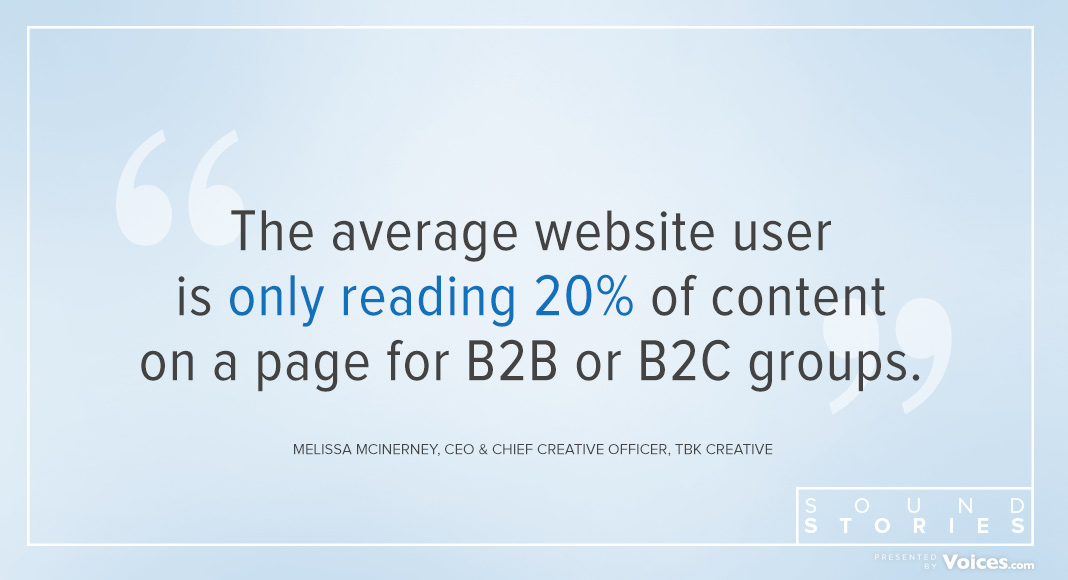Headlines Aren’t Just for the Media Anymore
Our world now demands a succinct style of communication. Whether that means condensing whole stories down to 140 characters or less, or web copy that is built to be ‘scannable’ – being able to write in headlines has never been more useful.
Here are some key considerations for writing in headlines in the digital space – provided by Melissa McInerney, CEO and Chief Creative Officer of tbk Creative.
Websites Need Provocative and Compelling Copy – in Short Order
Melissa McInerney knows the challenge of writing powerful but brief copy.
Her company is regularly called upon to design (or redesign) websites – an online medium where readers only absorb 20% of the copy on a page.
Standout Online Copy Avoids Traditional Catchphrases
“A lot of the time, we’re doing a website for a client because the website they have doesn’t represent them,” she says. “A lot of the language used on websites doesn’t really say anything. For instance, many companies may have the statement ‘We believe in great customer service.’ Well of course you do – but how do you deliver that? Why are you different?”
To Pull Out Unique Aspects of Your Business, Use a Creative Brief
“We have a project with a couple of building developers right now. In our creative brief process we discovered that a unique aspect of their business is that they live in the homes that they are working on.”
“So instead of using the headline ‘About the Builder’ we went with “Temporary Neighbors, Lifelong Friends,’” she says. “You know you need to meet the builder, but you can rephrase them into a unique nugget for who you are.”
Learn more about creating a great creative brief.

Every Headline is a Potential Tagline
And taglines are hard. This is where having a team (or a friend or colleague) to bounce ideas off of comes in handy.
Your headlines should be truthful and frank, as well as speak to the heart of your business.
“One thing I often advise people to do is to use uncommon language in your headlines,” says Melissa. According to her, this technique adds a level of interest and personality that can hook readers.
“For instance – back to the example of the couple who are builders – it was clear that these people truly care about the homes they create, and this stands against a perception of builders and developers as being ‘in it for the money.’”
“So we proposed that their tagline and website headline be ‘Great homes built by genuinely good people.’ When they heard that the reaction was just great – it felt like them.”
Want to Learn More Digital Storytelling Techniques?
Check out Melissa McInerney’s interview on the Sound Stories Podcast with host and Voices CBO, Stephanie Ciccarelli.

Melissa McInerney (left) with Voices Chief Brand Officer and Sound Stories Podcast host, Stephanie Ciccarelli (right).

Leave a Reply